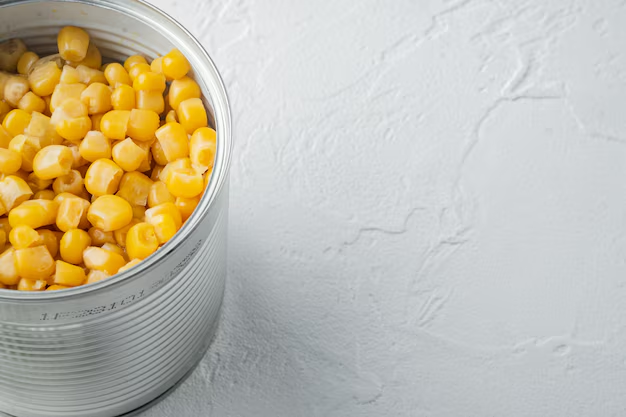🍂 How to Maximize the Freshness of Corn in Your Fridge
Sweet, juicy corn is a staple in many households, cherished for its versatility and delicious flavor. Once it's bought or harvested, however, the race begins to keep it fresh. The question on many minds is: how long can you store corn in the refrigerator? Let's dive deep into this topic and explore some practical tips for extending the life of your corn, along with related topics in food storage.
🌽 Understanding Freshness: How Long Does Corn Stay Fresh?
Corn's shelf life can vary based on several factors, including how it's stored and in what form. In general, fresh corn on the cob can last about 1 to 3 days in the refrigerator. However, keeping corn fresh begins well before you get it home.
Factors Influencing Corn Shelf Life
Harvest Time and Method: Corn is best when it’s harvested at peak ripeness. The time of day it's picked and how quickly it's cooled afterwards can impact freshness.
Original Condition: Corn that is already near the end of its shelf life won't last as long as freshly picked ears.
Storage Techniques: How corn is stored—whether you leave the husk on or off, wrap it tightly or loosely—plays a crucial role in its longevity.
🥶 Best Practices for Storing Corn in the Refrigerator
To maximize how long corn stays fresh, you need to consider how you store it. Here are some practical tips:
🌾 Keeping the Husk On vs. Off
Keeping the Husk On: Leaving the husk on can protect corn from drying out. It acts as a natural barrier to moisture loss and is especially effective if you plan to eat the corn within a couple of days.
Removing the Husk: If you prefer to remove the husk for easier access or faster cooking, wrap the corn tightly in plastic wrap or aluminum foil. This helps retain moisture and prevent it from absorbing other fridge odors.
🧊 Storing Whole vs. Kernels
Whole Cob: Keep corn in the coldest part of the fridge, typically at the back. This minimizes moisture loss and prolongs freshness.
Kernels: If you’ve already removed the kernels, store them in an airtight container or a well-sealed freezer bag. This method helps keep them fresh for around 2 to 3 days.
⏳ Can You Freeze Corn?
Freezing is a fantastic option if you want to extend the life of your corn beyond a few days.
Steps to Freeze Corn Properly
Blanching: Blanch the corn in boiling water for a few minutes, then transfer it to an ice bath to stop the cooking process. This step helps maintain flavor and color.
Storing: Once cool, dry the corn thoroughly. If the corn is kept on the cob, ensure it’s wrapped well in plastic or placed in a freezer bag. For kernels, an airtight container or freezer bag will suffice.
Labeling: Always label the storage bags or containers with the date, so you can keep track of how long the corn has been in the freezer.
Frozen corn can last up to a year, making it a handy staple to have on hand.
🍴 Related Topics in Corn Storage
🌧️ Moisture and Humidity Control
Corn is sensitive to moisture loss. The fridge maintains a certain level of humidity, but keeping corn tightly wrapped can prevent it from drying out too quickly.
🍃 Benefits of Vacuum Sealing
Vacuum sealing can significantly extend the shelf life of corn in the refrigerator by removing air and preventing the growth of spoilage bacteria. Vacuum-sealed corn can last much longer than regular stored corn, making it a worthwhile investment if you often find yourself with corn on hand.
⚡️ Quick Tips for Storing Corn
Here’s a handy list of practical storage tips for corn lovers:
- 🌽 Keep the husk on for short-term storage in the fridge to preserve moisture.
- 🧊 Remove the husk and wrap tightly if you prefer easy access.
- 🥶 Freeze corn by blanching and storing in airtight bags for long-term enjoyment.
- 🌿 Vacuum sealing is a robust option for extending shelf life.
- 🗓️ Label your stored corn with dates for easy tracking.
🧐 Identifying Spoiled Corn
Sometimes, despite our best efforts, corn can go bad. Here's what to look out for:
Signs of Spoilage
Discoloration: Watch for kernels that appear brown or black.
Mold: White, blue, or black mold on the corn or husk is a clear indicator it’s no longer safe to eat.
Off Smell: A sour or unusual odor is a strong sign that your corn has turned.
Safe Disposal Practices
When you identify spoiled corn, it's advisable to dispose of it promptly to avoid cross-contamination with other produce in your refrigerator.
🎉 Making the Most Out of Corn
Corn is versatile and can be used in various recipes. When you have an abundance of corn, consider trying new dishes like corn salads, chowders, or cornbread.
🔔 Closing Insights
Storing corn properly helps maintain its freshness and delicious taste. While corn generally lasts only a few days in the refrigerator, employing best practices can help you enjoy your corn at its peak for longer. Remember, the key to extending the life of your corn lies in how you store it, and with a few simple steps, you can savor its sweet taste well past purchase day.
By following these tips and keeping an eye on storage conditions, you can make the most out of your corn, reducing waste and enjoying the bounty of this beloved vegetable all year round. Happy storing!
